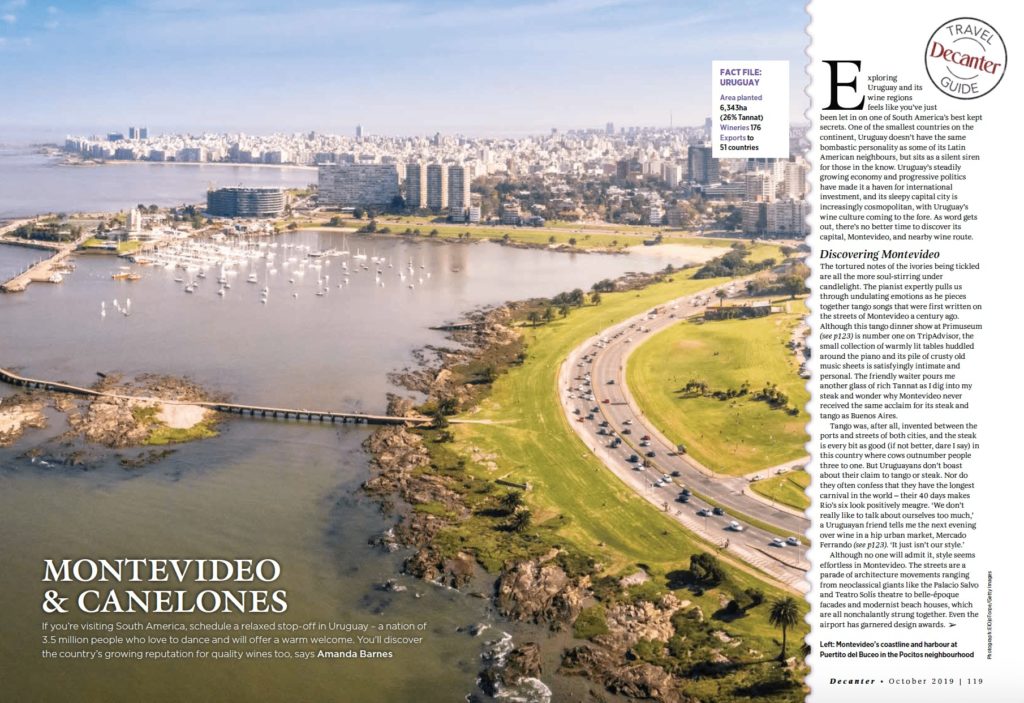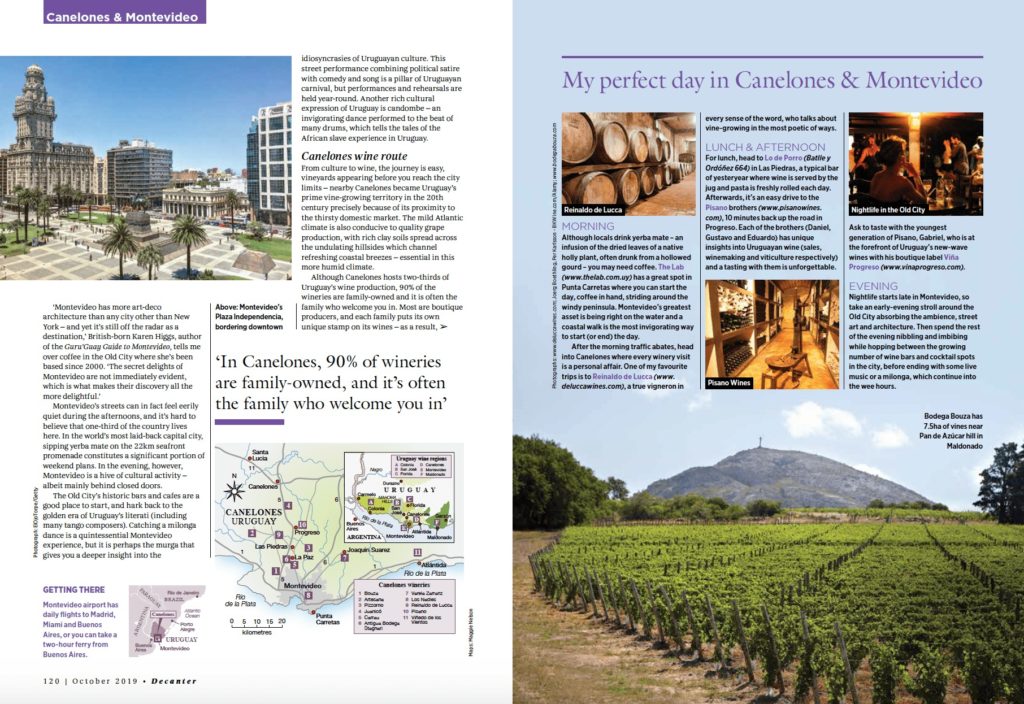Written for Decanter Magazine, October 2019
Exploring Uruguay and its wine regions feels like you’ve just been let in on one of South America’s best kept secrets. One of the smallest countries on the continent, Uruguay doesn’t have the same bombastic personality as many of its Latin American neighbours but sits as a silent siren for those in the know.
Uruguay’s steadily growing economy and progressive politics have made it a haven of international investment and its sleepy capital city is becoming increasingly cosmopolitan with Uruguay’s wine culture coming to the fore. As word gets out, there’s no better time to discover Montevideo and its wine route.
Uncovering the backstreets and idiosyncrasies of Montevideo
The tortured notes of the ivories being tickled are all the more soul stirring under candlelight. The pianist expertly pulls us through undulating emotions as he pieces together tango songs that were first written on the streets of Montevideo a century ago. Although this tango dinner show at Primuseum is number one on TripAdvisor, the small collection of warmly lit tables huddled around the piano and its pile of crusty old music sheets is satisfyingly intimate and personal. The friendly waiter pours me another glass of rich Tannat as I dig into my steak and wonder why Montevideo never received the same hype for its steak and tango as Buenos Aires.
Tango was, afterall, invented between the ports and streets of both cities, and the steak is every bit as good (if not better, dare I say) in this country where cows outnumber people 3 to 1. But Uruguayans don’t boast about their claim to tango or steak. Nor do they very often confess that they have the longest carnival in the world — their 40 days makes Rio’s six look positively meagre. “We don’t really like to talk about ourselves too much,” a Uruguayan friend tells me the next evening over wine in a hip urban market, Mercado Ferrando. “It just isn’t our style.”
Although no-one will admit it, style seems effortless in Montevideo. The streets are a parade of architecture movements ranging from neoclassical giants like Palacio Salvo and Teatro Solís to belle époque facades and modernist beach houses nonchalantly strung together. Even the airport is garnered in design awards.
“Montevideo has more art-deco architecture than any city other than New York — and yet it’s still off-the-radar as a destination,” British-born Karen Higgs, author of Guru’Guay Guide to Montevideo, tells me over coffee in the Old City where she’s been based since 2000. “The secret delights of Montevideo are not immediately evident, which is what makes their discovery all the more delightful.”
Indeed, Montevideo’s streets can in fact feel eerily quiet during the afternoons and it’s hard to believe that a third of the country lives here. In the world’s most laid back capital city, sipping yerba mate on the 22km seafront promenade constitutes for a significant portion of weekend plans. In the evening however, Montevideo is a hive of cultural happenings — albeit mainly behind closed doors.
The Old City’s historic bars and cafes are a good place to start, and hark back to the golden era of Uruguay’s literati (including many tango composers). Catching a milonga is a quintessential Montevideo experience, but it is perhaps the murga that gives you a deeper insight into the idiosyncrasies of Uruguayan culture. This street performance combining political satire with comedy and song is a pillar of Uruguayan Carnival but performances and rehearsals are held year-round. Another rich cultural expression of Uruguay is candombe — an invigorating dance performed to the beat of many drums which tells the tales of the African slave experience in Uruguay.
The rich cultural fabric of Uruguay is there to be disinterred, and a few days in the capital is just enough to scratch beneath the surface.
The wine route and wineries of Canelones
Although Canelones hosts two third’s of Uruguay’s wine production, 90% of the wineries are family owned and it is often the family who welcome you in — making you privy to their wine heritage within moments. With mainly boutique productions, each family has their own unique stamp on their wines and exploring Canelones provides a wealth of diversity in wine styles and varieties.
Vineyards appear from within the city limits and nearby Canelones became Uruguay’s prime vine growing territory in the 20th century precisely because of its proximity to the thirsty domestic market. The mild Atlantic climate is also conducive to quality grape production with rich clay soils spread across the undulating hillsides which channel refreshing coastal breezes throughout the wine region — essential for this more humid climate…
Read the full article by Amanda Barnes in Decanter Magazine, October 2019 edition. Or online at Decanter.com




